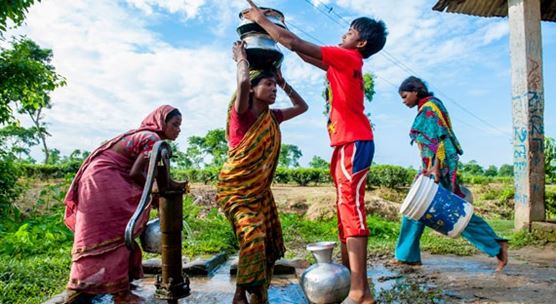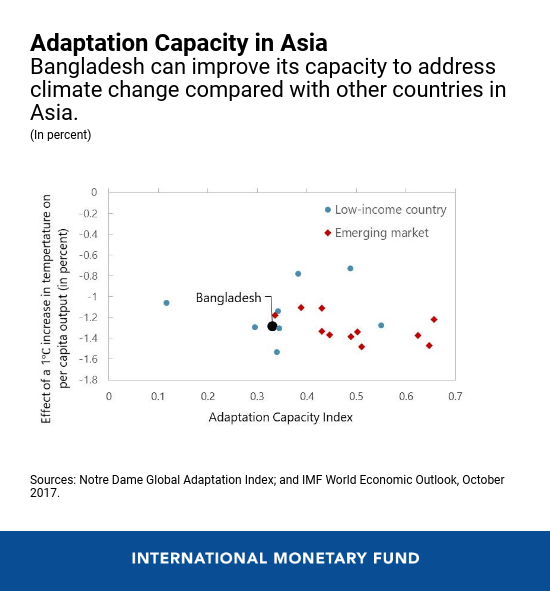
Local people collect water from a small village near Srimangal, Bangladesh. The country is active in terms of planning and action on climate change (photo: Tarzan9280/istockphoto)
Bangladesh Prepares for a Changing Climate
September 18, 2019
Bangladesh continues to make progress in reducing poverty, improving education opportunities, particularly for girls, and reaching other development-related goals. With a relatively young population, the country is well positioned for the next few decades to build on its recent success. However, in aspiring to reach upper middle-income status, Bangladesh faces several challenges, as discussed in the IMF’s latest economic assessment. Near the top of the list is coping with the risks associated with climate change.
Related Links
Bangladesh is considered especially vulnerable to climate change, with one-third of the population at risk of displacement because of rising sea levels. According to some indicators, the country ranked among the top ten countries in the world most affected by extreme weather events during 1998–2017 (Global Climate Risk Index). Losses linked to such events were estimated annually to average 1.8 percent of GDP between 1990 and 2008.
Rising sea levels and coastal erosion could lead to a loss of 17 percent of land surface and 30 percent of food production by 2050 according to experts from the Intergovernmental Panel on Climate Change, a body of the United Nations.
Recognizing the urgency of the issue, Bangladesh became one of the most active countries in terms of planning and action on climate change. While Bangladesh accounts for less than 0.35 percent of global greenhouse gas emissions, the country took several measures in recent years to promote climate change investments. Chief among these is adopting a fiscal framework designed to channel more resources towards adaptation investments. At the same time new environmental guidelines promote green financing, foster green banking, and establish dedicated funds. Bangladesh is also active in seeking grant financing from the international community, notably through the Green Climate Fund.
Looking forward, there is room to improve capacity to address climate change, particularly compared with emerging countries in Asia.

A priority for the government will be to gradually reform energy subsidies and free up fiscal and other resources to address climate change, including through revenue mobilization—a significant challenge given the country’s low tax revenue-to-GDP ratio, which stands at less than 10 percent.
More can also be done to promote climate-friendly investments. Several options are feasible:
- Reduce and gradually eliminate costly energy subsidies, while mitigating the impact on the poorest through targeted transfers.
- Consider phased introduction of a carbon tax on selected fuel products, notably those consumed by more affluent households, such as petrol and diesel at the pump, which could help raise revenue, reduce pollution, and encourage the use of cleaner, emissions-saving technologies.
- Prepare financially against the impact of natural disasters through a dedicated contingency line in the budget and the use of insurance mechanisms such as catastrophe bonds that provide more extensive coverage.
- Foster climate-friendly investments, including by taxing pollution, incentivizing green products, and enhancing the business environment to attract foreign investors who promote the use of clean technologies.







